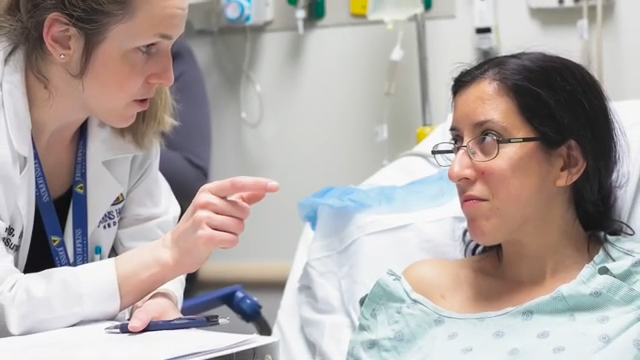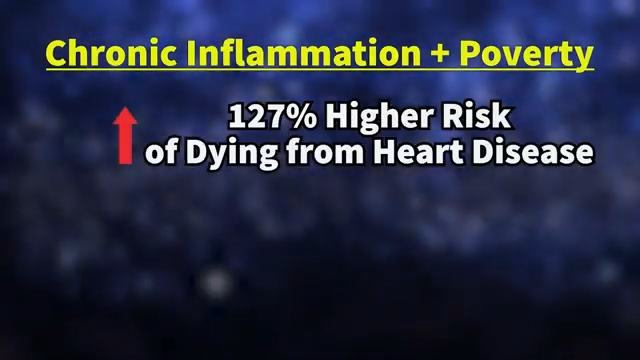SAN DIEGO, Calif. (Ivanhoe Newswire) — Doctors face big challenges treating rare cancers in the abdomen. They remove tumors, but cancer cells can spread through the abdominal cavity and the surface of other organs, making recurrence a probability. Surgeons at the University of California, San Diego are adding a procedure after surgery that’s improving patient survival with something called, HIPEC.
Lori McIntosh appreciates every day with her dogs, Spanky and Oliver. In 2013, after months of feeling bloated and uncomfortable, she was diagnosed with rare appendix cancer. Surgery came first.
Lori shared, “It was scary, especially when they tell you in the beginning that it’s going to be a seven to twelve day hospital stay. So, you know it’s pretty serious.”
Andrew M. Lowy, MD, FACS, Professor of Surgery, Chief, Division of Surgical Oncology at the University of California, San Diego added HIPEC therapy at the end of her operation to kill cancer cells he couldn’t see.
Dr. Lowy explained, “The chemotherapy’s administered in a salt solution similar to what people get intravenously, and then continuously circulated in and out of their body, typically over a 90-minute period.”
Dr. Lowy says HIPEC has at least three advantages over traditional chemo … the 106 degree chemo temperature kills cancer cells, the chemo penetrates two millimeters into tissue, and chemo doses can be higher because it doesn’t go into the rest of the body and cause side effects. He says that HIPEC is increasing cure rates of several cancers of abdominal organs. Cancers where chemo infusions won’t help because the cancer cells aren’t attached to the bloodstream.
“We can cure up to 70-80 percent of those patients where the traditional therapy was to just remove the tumor when it got big and symptomatic with the idea being that nobody could ever really be cured,” continued Dr. Lowy.
Five years after her procedure, Lori is cancer free.
“It’s a lot to get through, but when you’re through it on the other side, and you know, I think it makes you stronger, actually,” Lori stated.
Now, she volunteers as a HIPEC ambassador for UCSD, talking to the families of patients who are getting the procedure.
Dr. Lowy says HIPEC has been successful for patients with cancers of the appendix, colon, ovaries, and stomach and mesothelioma. His team is now working with scientists at Sanford Burnham Institute. They are developing proteins that will punch holes in tumors so drugs can be delivered even more efficiently.
Contributors to this news report include: Wendy Chioji, Producer; Roque Correa, Editor and Bruce Maniscalco, Videographer.
Free weekly e-mail on Medical Breakthroughs from Ivanhoe. To sign up: http://www.ivanhoe.com/ftk
REPORT #2537CHEMO BATH KILLS CANCER: HIPEC
BACKGROUND: In all types of cancer, some of the body’s cells begin to divide without stopping and spread into surrounding tissues. Cancer can start almost anywhere in the human body. Normally, human cells grow and divide to form new cells as the body needs them. When cells grow old or become damaged, they die, and new cells take their place. When cancer develops, however, this orderly process breaks down. Cells can become more and more abnormal, old or damaged cells survive when they should die, and new cells form when they are not needed. These extra cells can divide without stopping and may form growths called tumors. In 2018, approximately 1,735,350 new cases of cancer will be diagnosed in the United States and 609,640 people will die from the disease. The most common cancers are breast cancer, lung cancer, prostate cancer, colon and rectum cancer, melanoma of the skin, bladder cancer, non-Hodgkin lymphoma, kidney cancer, endometrial cancer, leukemia, pancreatic cancer, thyroid cancer, and liver cancer. Cancer mortality is higher among men than women today.
(Source: https://www.cancer.gov/about-cancer/understanding/what-is-cancer and https://www.cancer.gov/about-cancer/understanding/statistics)
CURRENT AND NEW TREATMENTS: There are many different types of cancer treatment, including surgery, radiation therapy, and/or systemic therapy. Treatments may be used alone or in combination depending on the type and stage of cancer, tumor characteristics, and the patient’s age, health, and preferences. Supportive therapies to reduce side effects and address other patient and family quality of life concerns may also be used. There’s another treatment known as hyperthermic intraperitoneal chemotherapy (HIPEC), which is a highly-concentrated, heated chemotherapy that is delivered directly to the abdomen during surgery. Unlike systemic chemotherapy delivery, which circulates throughout the body, HIPEC delivers chemotherapy directly to cancer cells in the abdomen. This allows for higher doses of chemotherapy treatment. Heating the solution may also improve the absorption of chemotherapy drugs by tumors and destroy microscopic cancer cells that remain in the abdomen after surgery.
RESEARCH BREAKTHROUGH: A new study shows that the creation of what researchers are calling, microtumors, can help predict drug effectiveness in cancer patients better than the current standard method of testing the drugs on rodents. Researchers took biopsies from 71 colorectal cancer patients and made “cancer organoids” or cell culture models of cancerous organs. They then treated these microtumors with drugs and observed the effectiveness in the laboratory. In the past, doctors predicted how effective a treatment would be by growing cancer in mice. This process took six to eight months. The microtumors grow in a 3-D matrix called a matrigel, and the whole process only takes six to eight weeks. Nicola Valeri, MD, lead clinician of the study and a team leader at the Institute of Cancer Research in London, says the results are encouraging for multiple reasons… growing cancers in mice costs more, takes longer, and has lower effectiveness scores. If doctors can more accurately predict what drugs will treat someone’s cancer, they can select the right drugs for the right patients. If they know for sure what drugs won’t work, they can spare patients the painful side effects. Valeri continued, “You can avoid unnecessary toxicity to patients who won’t benefit, switch to another treatment, and even avoid a treatment that doesn’t work.”
(Source: https://www.cnbc.com/2018/02/24/mini-tumors-could-mean-more-effective-cancer-treatments-.html)
* For More Information, Contact:
Andrew Lowy, MD Yadira Galindo, (858) 249-0423



